
Thursday, January 16th, 2025
Guillaume Guillon Lethière - Born in Guadeloupe
Cover Image: Le Serment aux Ancêtres (detail) by Guillaume Guillon Lethière
Image in public domain
When I went to the Louvre several weeks ago to see the Barbara Chase-Riboud works displayed during her Everytime a Knot Is Undone... exhibition, I walked past an exhibition entitled Guillon Lethière - Né à la Guadeloupe (Born in Guadeloupe).
I didn't have time to explore it then, but I was intrigued by the subtitle of the show and vowed to investigate it.
When I learned that Guillon Lethière was the creator of the iconic painting that is being used to advertise the exhibition, Le Serment aux Ancêtres, I decided to explore it to learn about the artist.
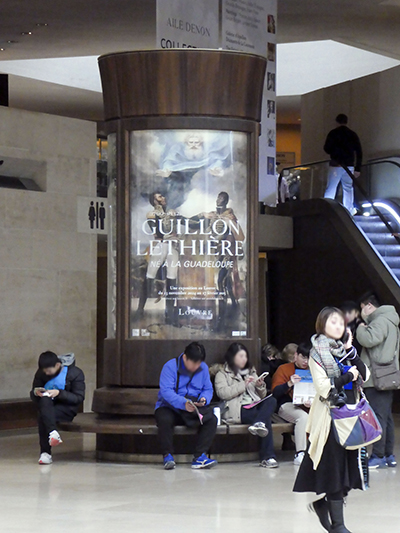 Pillar advertising Guillon Lethière - Né à la Guadeloupe at the Louvre
Pillar advertising Guillon Lethière - Né à la Guadeloupe at the Louvre
© Entrée to Black Paris
Lethière was the son of a freed mixed-race (metisse) Guadeloupan woman and a white French plantation owner and slave holder. His father brought him to France when he was 14 years old and legally recognized him when he was 39. This allowed Lethière to adopt his father's name - Guillon - which he used professionally thereafter.
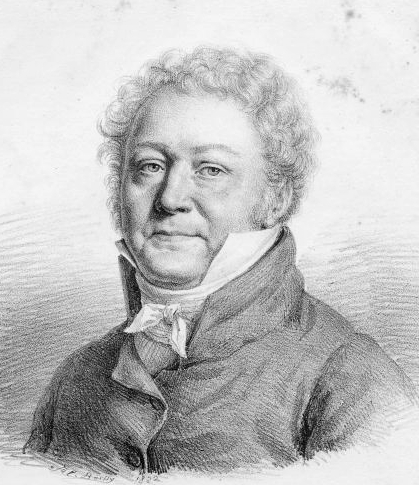 Guillaume Guillon Lethière by Julien-Léopold Boilly
Guillaume Guillon Lethière by Julien-Léopold Boilly
Public domain
I have not found any information about the fate of his mother.
Guillon Lethière had an aptitude for painting and became a well-respected and prominent artist during the early 19th century. Trained during the Ancient Regime, he painted professionally during the Napoleonic era and the Restoration. Lucien Bonaparte (Napoleon's brother) was his patron and loyal supporter, and it was because of this relationship that Lethière was appointed director of the French Academy in Rome.
Much of the exhibition portrays the artist's rise to prominence and the classic style of painting he preferred. Two of his monumental works, Brutus condamnant ses fils à mort (1811) and La Mort de Virginie (1828), hang permanently in the Denon wing of the Louvre. At approximately 4.5 m x 8 m (14.7 ft x 26.2 ft), they were too large to move to the Sully wing for this exhibition. They are frequently referenced through the panels at the entrance to both sides of the exhibition, preparatory pieces of various sections of the finished works, and a video near the end of the show.
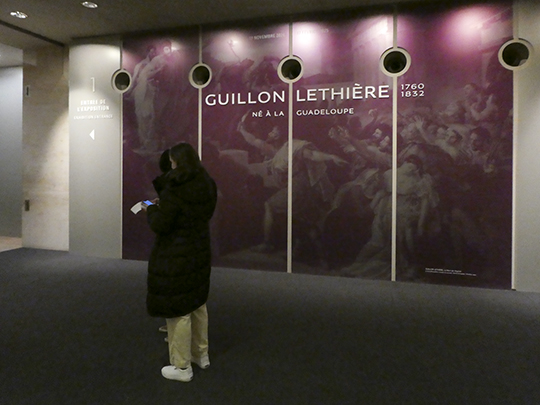 La Mort de Virginie at entrance to Part 1 of the exhibition
La Mort de Virginie at entrance to Part 1 of the exhibition
© Entrée to Black Paris

Brutus condamnant ses fils à mort
at entrance to Part 2 of the exhibition
© Entrée to Black Paris
Because Guillon Lethière did not adapt to the changes in style that emerged in the professional art world, his works eventually fell out of favor, and he became largely forgotten.
The exhibition pays considerable attention to the importance the French Caribbean held for the artist. In the first section, visitors learn that he was friends with Thomas Alexandre Dumas (who became a general in Napoleon's army), his son, Alexandre Dumas père (writer), and a painter named Benjamin Rolland.
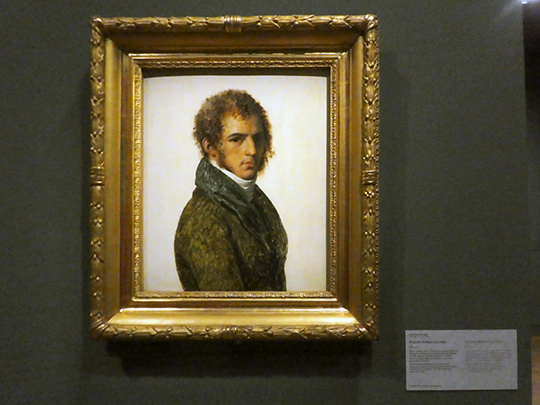 Portrait of Benjamin Rolland by Anne-Louis Girodet
Portrait of Benjamin Rolland by Anne-Louis Girodet
© Entrée to Black Paris
 1831_400px wide.jpg)
Bust of Alexandre Dumas, père by Jacques-Auguste Fauginet
© Entrée to Black Paris
All these men were of mixed race and all had origins in the French Caribbean. Thomas Alexandre Dumas and Benjamin Rolland were both sons of enslaved women.
It is presumed that Lethière and Rolland met through their mutual friend, history painter Fortuné Dufau, who was born in Saint Domingue (Haïti).
Lethière's son married a Haïtian woman and moved to the island.
Alexandre Dumas, père eulogized Lethière at his funeral.
Toward the middle of the show, we learn that Guillon Lethière taught Caribbean painters at his private studio and at the Académie des Beaux Arts, where he was named a professor in 1819.
He taught several women painters at his studio as well.
As I made my way through the exhibition, I was pleased to learn so much about Lethière's personal motivations and preferences. They whetted my appetite for what I knew was the "grand finale" of the show, the Serment des Ancêtres.
When I arrived at the room where it was displayed, I was disappointed to find a huge black & white replica of it!
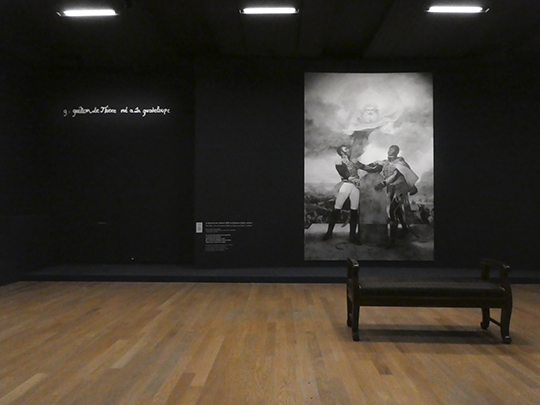 Le Serment des Ancêtres in Black & White
Le Serment des Ancêtres in Black & White
© Entrée to Black Paris
The information panel at the lower left of the wall indicated that the original work was unexpectedly not able to travel to Paris for this show.
A recess in the wall opposite the replica shelters a bench where visitors can listen to audio commentary about the painting.
On another wall in this room, a smaller color replica of the painting is "dissected" to provide information about individual elements of the work.
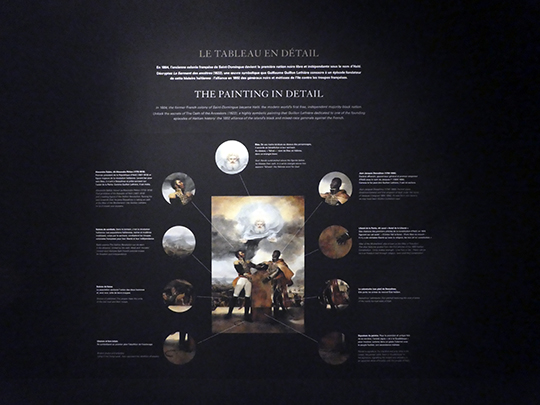 Le Serment des Ancêtres in detail
Le Serment des Ancêtres in detail
© Entrée to Black Paris
The men represented are General Alexandre Pétion (left), first president of the Republic of Haïti, and General Jean-Jacques Dessalines (right), governor-general and first emperor of Haïti. A representation of God hovers over them, and scenes evoking the revolution are depicted in the background.
Nearby, a timeline lists the major events that transpired between the Haïtian Revolution and the creation of Le Serment des Ancêtres.
For me, the most interesting thing about this painting is the fact that the artist painted it in secret and offered it as a gift to Haïti!
Napoleon had reinstated slavery twenty years before Guillon Lethière created this work, and France had not yet recognized Haïti as an independent nation at the time he finished it. He was at the pinnacle of his career, which he owed largely to the patronage of Napoleon's brother.
One can easily imagine that to create this work overtly would have provoked the ire of the emperor and his brother and likely jeopardized his professional future.
To signify solidarity with the people of Haïti, Guillon Lethière included the words "Né à la Guadeloupe" (born in Guadeloupe) in his signature for the first and only time when he created this work.
The signature is found at the base of the pillar in the center of the painting.
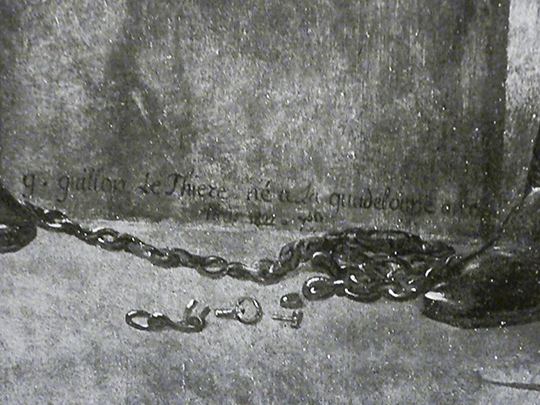 Le Serment des Ancêtres - signature in replica of painting
Le Serment des Ancêtres - signature in replica of painting
© Entrée to Black Paris
A replica of the signature is displayed on the wall next to the black & white replica of the painting.
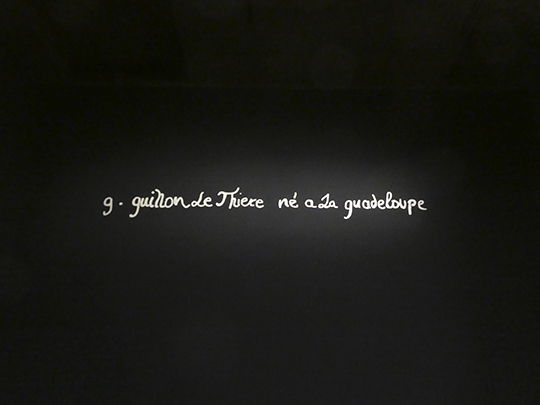 Le Serment des Ancêtres - replica of signature in painting
Le Serment des Ancêtres - replica of signature in painting
© Entrée to Black Paris
The timeline mentioned above indicates that Guillon Lethière's son, Auguste, secretly transported the painting to Haïti and presented it to the country's people on his father's behalf.
Guillon Lethière - Né à la Guadeloupe will be on display in the Napoleon Mezzanine of the Sully wing at the Louvre through February 17, 2025.

 Our Walk: Black History in and around the Luxembourg Garden - Click here to book!
Our Walk: Black History in and around the Luxembourg Garden - Click here to book!